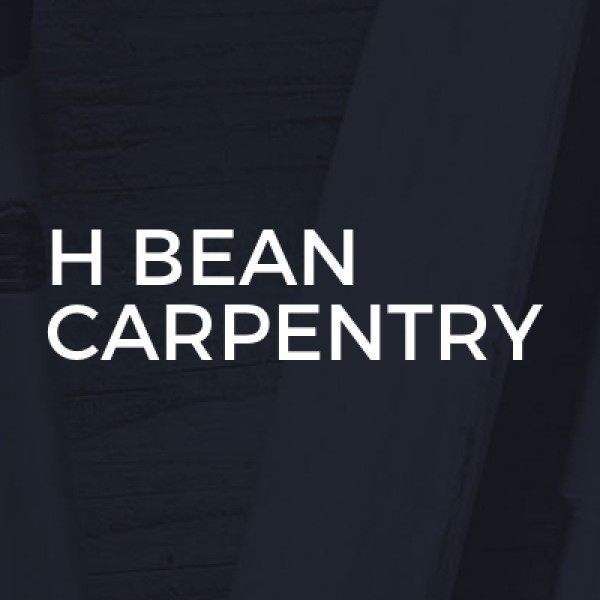Loft Boarding in Edmonton
Welcome to Crown Roofing And Building, your trusted partner for all your building and renovation needs in New Barnet and across Barnet, L... read more »
Welcome to SAF Construction Consultant, your premier choice for construction services in South Tottenham and the wider Haringey, London a... read more »
Welcome to Plowright Hinton Ltd, your go-to tradespeople in Panshanger, offering a wide array of services throughout Hertfordsh... read more »
Secta Building Services is your go-to expert for renovations, boiler and heating engineers, kitchen fitters, bathroom fi... read more »
Welcome to H Bean Carpentry, your go-to experts for all things carpentry and plastering in the heart of Blackfen. Proudly serving the Bex... read more »
Welcome to Rems Building Services Ltd, your trusted p... read more »
Welcome to O'Donovan Construction Management Ltd, you... read more »
Welcome t... read more »
Welcome to Madeira Construction Ltd, your trusted bui... read more »
Welcome to Brooklyn Block Paving, your trusted trades... read more »
Henwood Contracts, nestled in the he... read more »
Ving Building Solutions Limited is y... read more »
Kaz Star Builders Ltd: Premier Builders in Ea... read more »
Welcome to Upmost Lofts, your premier choice for top-... read more »
Welcome to A To Z Builders, your go-to experts for al... read more »
Welcome to Hall and Sons Ltd, your premier choice for... read more »
Welcome to G&J Builders, your trusted partner for lof... read more »
Hoxha Construction UK Ltd, a reputab... read more »
Search Loft Boarding in places nearby
Understanding Loft Boarding in Edmonton
Loft boarding in Edmonton is becoming increasingly popular as homeowners seek to maximise their living space without the need for costly extensions. By converting unused loft areas into functional spaces, residents can enjoy additional storage or even create new rooms. This article delves into the various aspects of loft boarding, offering insights into its benefits, processes, and considerations.
The Benefits of Loft Boarding
Loft boarding offers numerous advantages, making it an attractive option for many homeowners. Firstly, it provides extra storage space, which is often a necessity in homes with limited room. By utilising the loft, you can store items that are not frequently used, such as seasonal decorations or old memorabilia, keeping your living areas clutter-free.
Moreover, loft boarding can enhance the energy efficiency of your home. Properly installed boards can improve insulation, reducing heat loss and potentially lowering energy bills. This is particularly beneficial in Edmonton, where winters can be harsh.
Another significant benefit is the potential increase in property value. A well-executed loft conversion can add considerable value to your home, making it a wise investment if you plan to sell in the future.
Planning Your Loft Boarding Project
Before embarking on a loft boarding project, it's essential to plan carefully. Start by assessing the available space and determining how you intend to use it. Will it serve as a storage area, or do you envision a more elaborate conversion, such as a home office or guest room?
Next, consider the structural integrity of your loft. It's crucial to ensure that the existing structure can support the additional weight of the boards and any items you plan to store. Consulting with a structural engineer can provide peace of mind and prevent potential issues down the line.
Additionally, check for any planning permissions or building regulations that may apply. While loft boarding typically falls under permitted development, more extensive conversions might require approval from local authorities.
Choosing the Right Materials for Loft Boarding
Selecting the appropriate materials is a critical step in the loft boarding process. The most common material used is chipboard, known for its durability and cost-effectiveness. However, other options, such as plywood or OSB (Oriented Strand Board), may be suitable depending on your specific needs and budget.
When choosing materials, consider factors such as load-bearing capacity, insulation properties, and ease of installation. It's also wise to opt for moisture-resistant boards, especially in areas prone to dampness.
Installation Process of Loft Boarding
The installation of loft boarding involves several steps, each requiring careful attention to detail. Begin by clearing the loft space of any debris or obstructions. This ensures a clean working environment and prevents damage to the boards during installation.
Next, lay down insulation if it's not already in place. This step is crucial for maintaining energy efficiency and preventing heat loss. Once the insulation is secured, you can begin installing the boards. Start at one corner of the loft and work your way across, ensuring each board is securely fastened to the joists.
It's important to leave a small gap between the boards and the walls to allow for expansion. Additionally, consider installing a raised floor system if you need to accommodate extra insulation or electrical wiring.
Safety Considerations for Loft Boarding
Safety should be a top priority when undertaking a loft boarding project. Ensure that the loft is adequately ventilated to prevent the build-up of moisture, which can lead to mould and structural damage.
Use appropriate safety gear, such as gloves and goggles, to protect yourself during installation. If you're not confident in your DIY skills, consider hiring a professional to ensure the job is done safely and correctly.
Additionally, ensure that the loft hatch is secure and easy to access. Installing a sturdy ladder or staircase can prevent accidents and make it easier to use the loft space.
Cost Considerations for Loft Boarding in Edmonton
The cost of loft boarding in Edmonton can vary depending on several factors, including the size of the loft, the materials used, and whether you hire professionals or undertake the project yourself. On average, homeowners can expect to spend between £1,000 and £3,000 for a basic loft boarding installation.
While this may seem like a significant investment, the long-term benefits, such as increased storage space and potential property value, often outweigh the initial costs. Additionally, DIY installations can help reduce expenses, provided you have the necessary skills and tools.
Environmental Impact of Loft Boarding
Loft boarding can have a positive environmental impact by improving your home's energy efficiency. Proper insulation reduces the need for heating, lowering your carbon footprint and contributing to a more sustainable lifestyle.
When selecting materials, consider eco-friendly options, such as sustainably sourced wood or recycled materials. These choices can further enhance the environmental benefits of your loft boarding project.
Common Challenges in Loft Boarding
While loft boarding offers many advantages, it can also present challenges. One common issue is limited headroom, which can restrict the type of conversion possible. In such cases, creative solutions, such as installing skylights or dormer windows, can help maximise the available space.
Another challenge is ensuring adequate insulation without compromising the structural integrity of the loft. It's essential to balance insulation needs with the load-bearing capacity of the joists to prevent damage.
Maintenance Tips for Your Loft Space
Once your loft boarding is complete, regular maintenance is key to preserving its functionality and appearance. Periodically check for signs of dampness or mould, particularly in corners and around the edges of the boards.
Keep the loft space organised to prevent clutter and make it easier to access stored items. Consider using shelving units or storage boxes to maximise the available space.
Innovative Uses for Loft Spaces
Loft spaces offer endless possibilities for creative use. Beyond traditional storage, consider transforming your loft into a cosy reading nook, a home office, or even a playroom for children.
With the right design and furnishings, a loft can become a unique and inviting part of your home, adding both functionality and charm.
Frequently Asked Questions About Loft Boarding
- Is loft boarding a DIY-friendly project? Yes, with the right tools and skills, many homeowners can successfully board their lofts. However, complex projects may require professional assistance.
- Do I need planning permission for loft boarding? Generally, loft boarding falls under permitted development, but extensive conversions may require approval. It's best to check with local authorities.
- How long does loft boarding take? The duration varies based on the size of the loft and the complexity of the project. A basic installation can take a few days, while more elaborate conversions may take weeks.
- Can loft boarding improve my home's energy efficiency? Yes, proper insulation and boarding can reduce heat loss, improving energy efficiency and potentially lowering energy bills.
- What materials are best for loft boarding? Chipboard is a popular choice due to its durability and cost-effectiveness, but plywood and OSB are also viable options.
- How much weight can a boarded loft support? The weight capacity depends on the structural integrity of the loft and the materials used. Consulting with a structural engineer can provide guidance.
Final Thoughts on Loft Boarding in Edmonton
Loft boarding in Edmonton presents an excellent opportunity for homeowners to optimise their living space. By carefully planning and executing a loft boarding project, you can enjoy increased storage, improved energy efficiency, and potentially higher property value. Whether you choose to undertake the project yourself or hire professionals, the benefits of a well-boarded loft are undeniable. Embrace the possibilities and transform your loft into a valuable asset for your home.
Send a message









